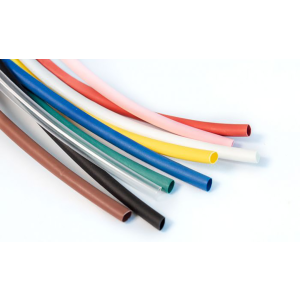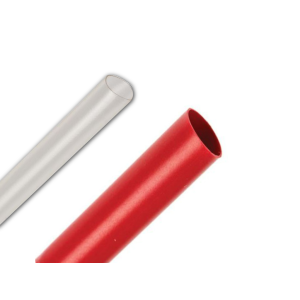Engineers, electricians and tinkerers all know the satisfaction of perfectly fitting a piece of heat shrink.
When your substrate fits snugly inside its heat shrink casing and there are no bumps or grooves along the length of the tube, the private sense of pride can improve your mood remarkably.
If it is worth doing then it is worth doing well.
Engineers, electricians and tinkerers all know the satisfaction of perfectly fitting a piece of heat shrink. When your substrate fits snugly inside its heat shrink casing and there are no bumps or grooves along the length of the tube, the private sense of pride can improve your mood remarkably.
Whether you are an expert applicator or a relative novice, this guide will help you brush up on your skills and install heat shrink the proper way.
Before you get started, you’ll need four things:
- Heat shrink material (usually heat shrink tubing)
- Heat gun
- Heat gun reflector nozzle
- Cable
Select The Right Heat Shrink
There are many heat shrink products to choose from. Products have different materials and unique properties that make them suitable for different purposes.
You need to pick a heat shrink product that matches your needs. To help you do this, we have created a heat shrink specification guide that you can use to compare different products.
Make sure you pay attention to the heat shrink certifications. Certain industries require specific certifications – but they can also be used to judge the quality of a heat shrink product.
Read our heat shrink specification guide to make sure you choose the right heat shrink product.
Measuring Heat Shrink Tubing
Making sure you get a snug fit with your heat shrink tubing means you should take some careful measurements.
The most important is the cable diameter. You can use a ruler for this, but for a more accurate measurement you should use a caliper.
Alternatively, if you have a product code, you should be able to look up the diameter of the cable online.
You also need to measure components that are attached to the wire if you are using heat shrink tube and it needs to pass over it.
If you are using heat shrink tubing to group together several wires then you can get a measurement by wrapping a piece of string around the bunch tightly, before unwrapping and measuring the length of string.
Once you have the right measurements, it’s time to select your heat shrink tubing – paying close attention to the expanded inside diameter (diameter before heating) and the recovered inside diameter (diameter after heating).
The expanded inside diameter needs to be wide so you can pass the heat shrink tubing over the wire and any components to get to the correct position.
The recovered inside diameter needs to be equal to or less than the diameter of the cable where the heat shrink is to be applied.
Your longitudinal measurement is also important. You need to make sure that the heat shrink length is slightly longer than the area you need to cover, because heat shrink tubing also shrinks longitudinally as it is heated.
Longitudinal shrinkage is usually slight (around 5-15%). You will find a longitudinal shrinkage factor in the tube’s specification.
Applying Heat Shrink Tubing
This is the most important step to ensure a smooth application.
After cutting your heat shrink tubing to the required length, simply slide it over the cable until it reaches the required area.
To make sure you get a clean application, you may want to suspend the wire using cable grips or hold the heat shrink in place using cable ties.
Once the tubing is in position, you need to heat it using a heat gun. Keep the heat gun a few centimetres away from the heat shrink and gently move it forwards and backwards along the length of the tube.
Getting the heat gun too close, or keeping it in one place for too long may damage the wire.
To make sure the tubing shrinks evenly it can be tempting to push and prod the tubing. This can help, but be careful because the tubing can be very hot.
While it is not absolutely necessary, a reflector nozzle on your heat gun can help you achieve a fit that’s tight and secure on the wire.
We always recommend using a heat gun because it is easier and safer than using a hairdryer or lighter.
How To Heat Shrink Wires That Already Have Components Attached
Sometimes you may need to repair or reinforce wires that are already attached to components, making repair with heat shrink tubing difficult.
If, for example, you need to repair a wire that is already attached to a machine, then putting a tubing along the wire will be impossible.
Instead, you can use a ‘wraparound’ solution like heat shrink tape.
To apply heat shrink tape, just wrap the tape tightly around the spliced area and use a heat gun to tighten as above. You can use cable ties to hold the heat shrink tape in place while you apply the heat.
Be wary about using too much tape because it may result in a looser fit.
Heat shrink tape is stronger than amalgamation tape and electrical tape, more suitable for heavy wiring and wires that will see a lot of movement.







